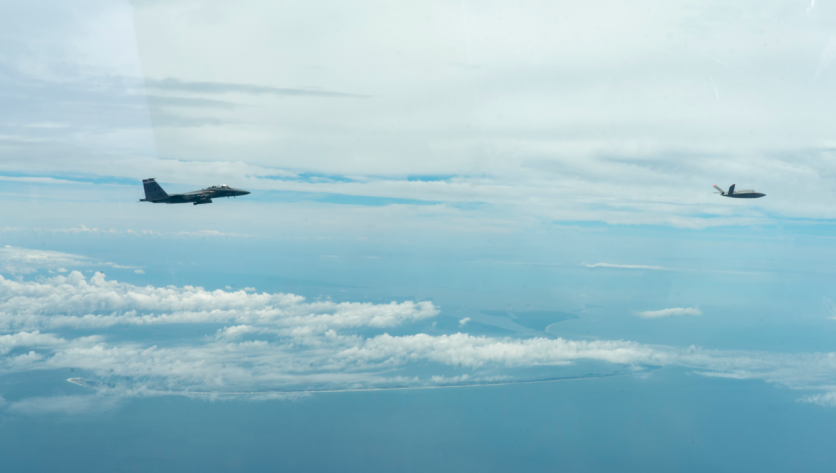Under the control of artificial intelligence (AI), the experimental XQ-58A Valkyrie managed to glide to the skies on July 25.
According to the Air Force Research Laboratory (ARFL), the test took place at the Eglin Test and Training Complex in Florida.
The experiment lasted for around three hours and the aircraft was seen flying thanks to the AI pilot.
XQ-58A Valkyrie Drone Flies With AI

The short test that ARFL conducted last week was made possible with the help of Skyborg Vanguard. The unmanned fighter drone successfully moved around with AI-controlled command.
The aircraft that's being tested under the United States Air Force's Low-Cost Attritable Strike Demonstrator (LCASD) program is the unmanned Kratos XQ-58 Valkyrie combat aerial vehicle (UCAV).
The team created this drone to be a stealthy mini-jet as part of the project portfolio of the USAF Research Laboratory's Low-Cost Attritable Aircraft Technology (LCAAT).
"This sortie officially enables the ability to develop [artificial intelligence and machine learning] 'agents' that will execute modern air-to-air and air-to-surface skills that are immediately transferrable to the CCA program," Col. Tucker Hamilton, the chief of AI test and operations with the Air Force said.
The CCA program aims to produce combat-ready drones that can accompany humans with AI intervention. These aircraft also involve Loyal Wingmen, the human-controlled F-35 and F-22 aircraft.
Flight Testing of Machine Learning AI
As per the lab's commander Brig. Gen. Scott Cian, AI will be a future indicator of warfare that's why it's important to understand how the aircraft's operations run under AI control.
To keep pace with the growing AI adoption, the squad relies on Human-Machine Learning to discover more findings about the Valkyrie drone. This will also help their partners to study their coordinated tests.
With the combined use of simulation, modeling, and high-performance computing, AACO has taken the testing of the uncrewed vehicle to a new level, per Interesting Engineering on Friday, Aug. 4.
The most recent series of experiments only proves that military men are catching up with AI's capability. The test also involves the safe flight of the XQ-58 while on air, per AACO Program Manager Dr. Terry Wilson.
AFRL says that the Department of Defense (DOD) will remain dedicated and faithful to the responsible application of AI. The collaboration will continue among developers and AI experts.
Back in 2022, California Institute of Technology researchers created an AI-powered drone that can adjust even to the most extreme wind conditions.
At that time, the group of experts developed "Neural-Fly," a special deep-learning method for drones so they could fly even in hurricanes and other catastrophes.
The drone is said to be resistant to the meteorological conditions happening inside a hurricane. In doing so, it can tweak its track and safely get out of the disaster smoothly.

ⓒ 2025 TECHTIMES.com All rights reserved. Do not reproduce without permission.




